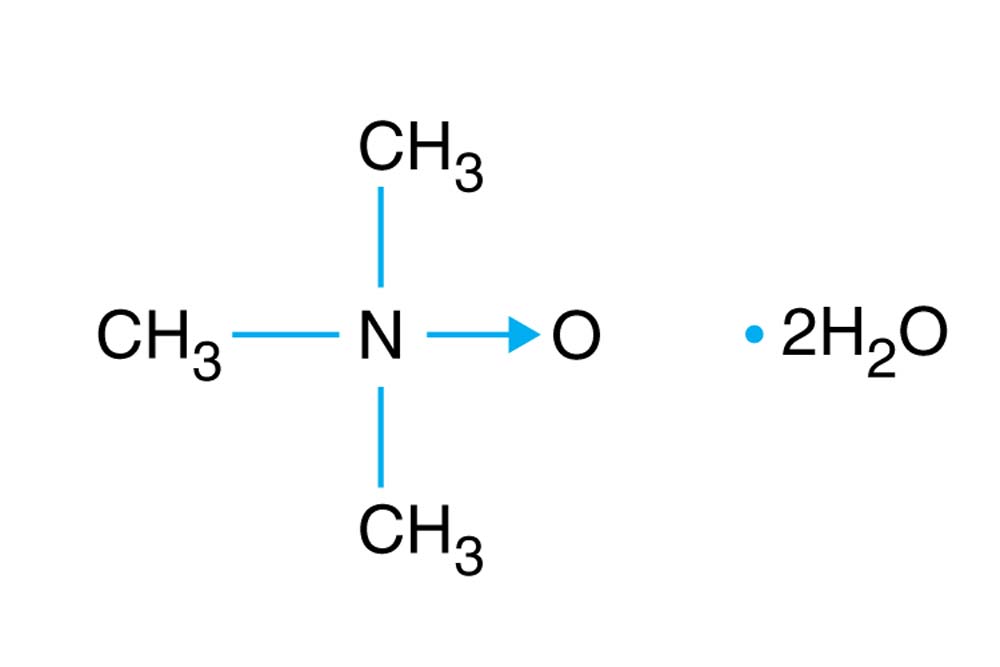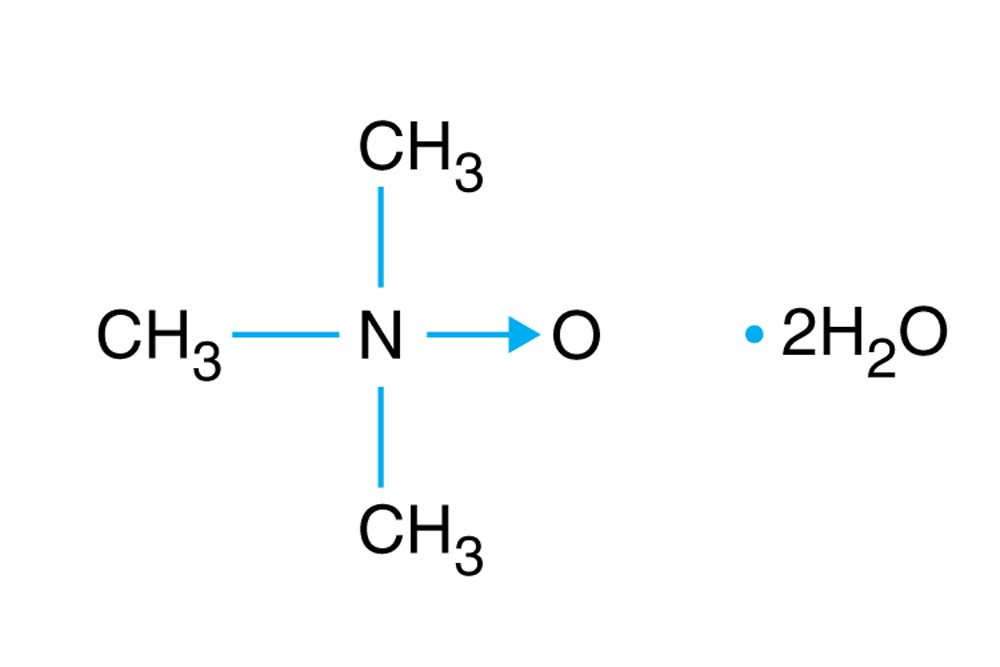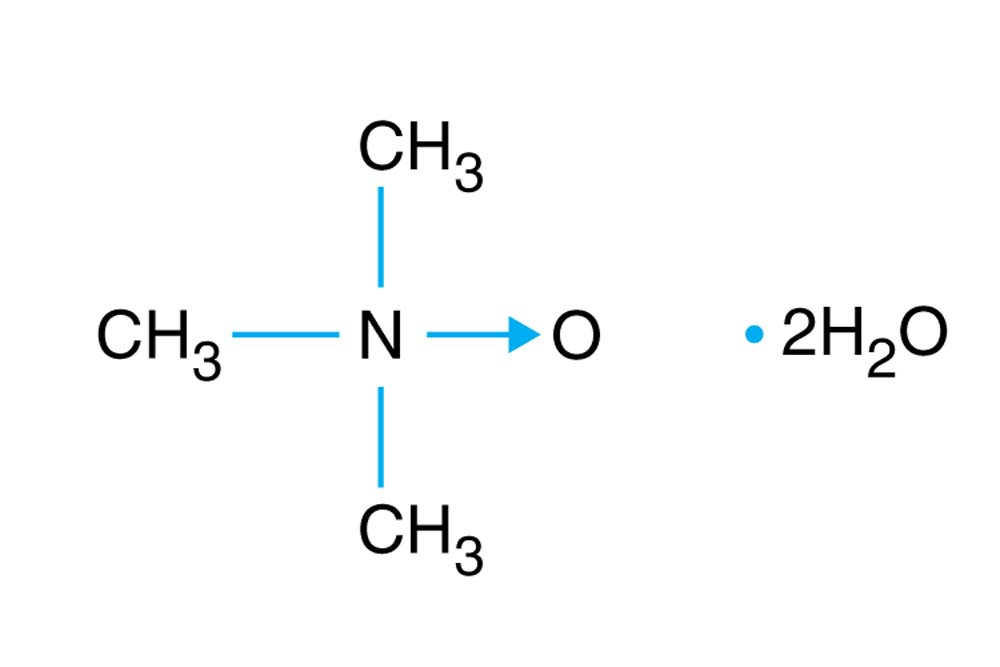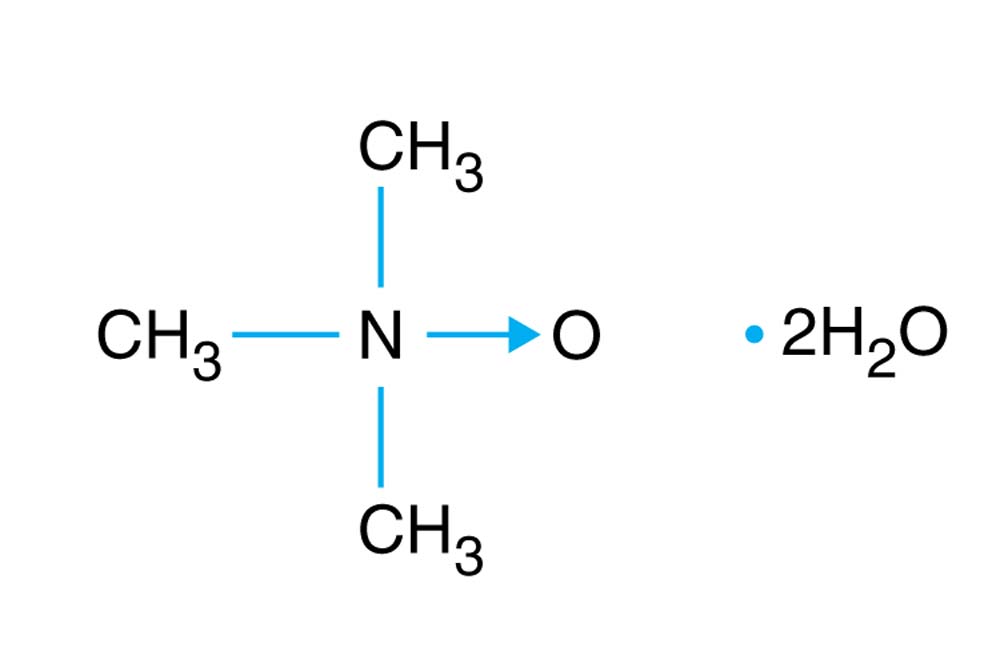Hampton Research蛋白结晶试剂盒






Products > Optimize Reagents > Optimize – Cryoprotectants > TMAO
TMAO
Applications
- Water soluble cryoprotectant
Features
- A very versatile cryoprotectant for macromolecular crystals
- Protein stabilizer
- TMAO can be a viable alternative when conventional cryoprotectants fail
- Low viscosity and low surface tension
- Sterile filtered
- Formulated in Type 1+ ultrapure water: 18.2 megaohm-cm resistivity at 25°C, < 5 ppb Total Organic Carbon, bacteria free (<1 Bacteria (CFU/ml)), pyrogen free (<0.03 Endotoxin (EU/ml)), RNase-free (< 0.01 ng/mL) and DNase-free (< 4 pg/µL)
Description
Trimethylamine N-oxide dihydrate (TMAO)
Formulated from TMAO dihydrate in Type 1 lab water (deionized) and sterile filtered (0.22 micron)
Synonyms: TMANO, TMAO
(CH3)3NO•2H2O
C3H9NO•2H2O
Mr 111.14
CAS Number [62637-93-8]
EC Number 214-675-6
Beilstein Registry Number 4(4)144
Merck 14,9711
RTECS YH2850000
Purity ≥ 98.0%
Measured pH range: 9.2 – 10.6 at 25°C
Measured Conductivity Range: 5.6 – 96.6 µS/cm at 25°C
Measured Refractive Index Range: 1.37660 – 1.37804 at 20°C
When using TMAO as a cryoprotectant, try soaking the crystals in 4.0 M TMAO for 10 seconds and then cryo cool directly in the cryo stream.

Click to Zoom In
CAT NO
HR2-857
NAME
DESCRIPTION
1 mL
PRICE
$26.00
cart quote
Support Material(s)
 HR2-857 4.0 M TMAO SDS
HR2-857 4.0 M TMAO SDS Certificate Of Analysis
Related Item(S)
- CryoPro
References
1. Trimethylamine N-oxide as a versatile cryoprotective agent in macromolecular crystallography. Christoph Mueller-Dieckmann, Brice Kauffmann and Manfred S. Weiss. J. Appl. Cryst. (2011). 44, 433–436 doi:10.1107/S0021889811000045.


Hampton Research, first in crystallization since 1991, developing and delivering crystallization and optimization screens, reagents, plates, and other tools for the crystallization of biological macromolecules, including proteins (antibody), peptides (insulin), and nucleic acids (DNA).
- Products
- Gallery
- My Account
|
|
|
- Contact Us
- Quick Order
- Support
|
- Privacy Policy
- Terms and Conditions
|
- Products
- Gallery
- My Account
- Support
- Contact Us
- Quick Order
- Privacy Policy
- Terms and Conditions
|
|
|
|
|
|
|
© 2022 HAMPTON RESEARCH CORP.
| Website by Skyhound Internet




